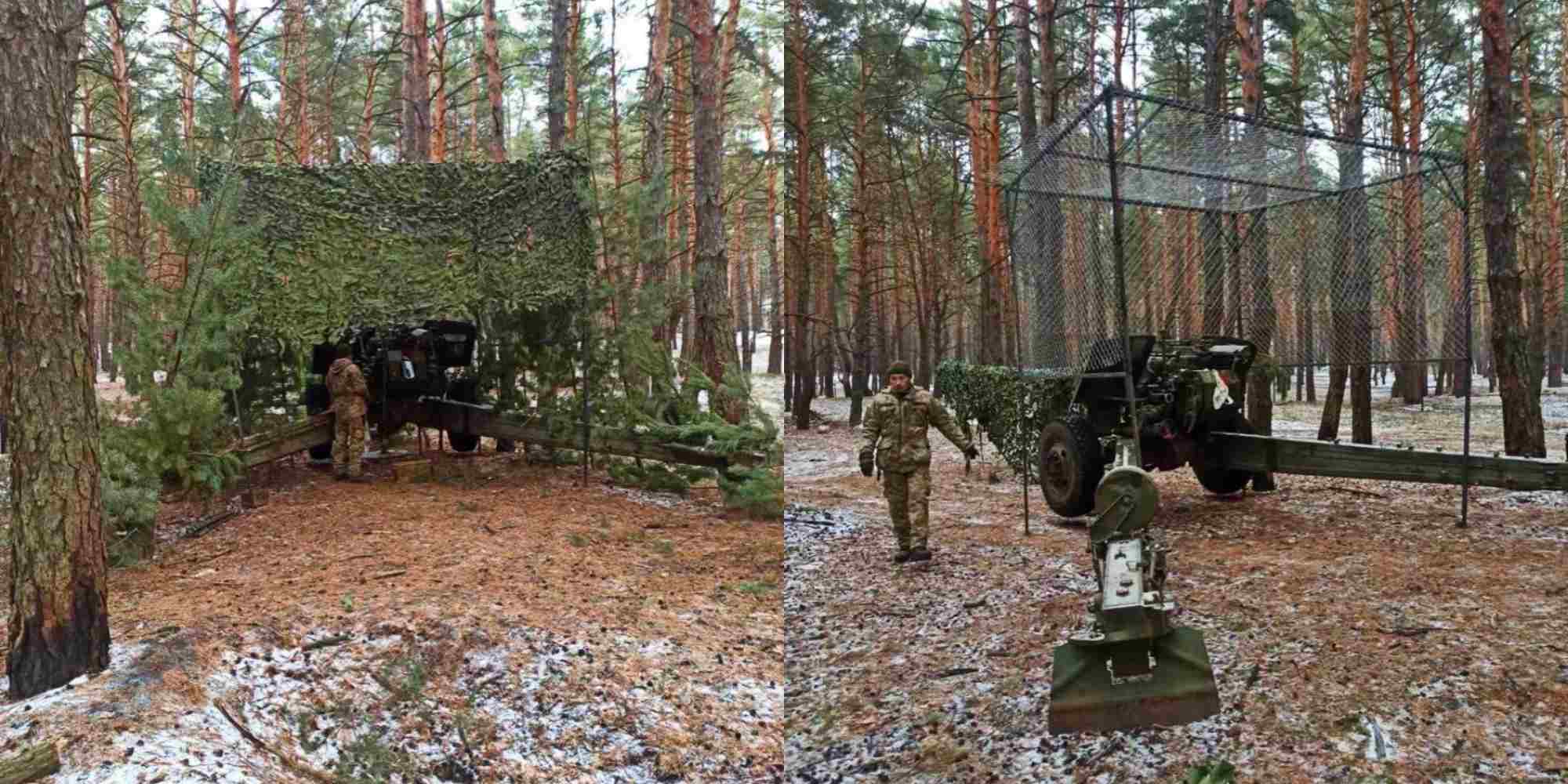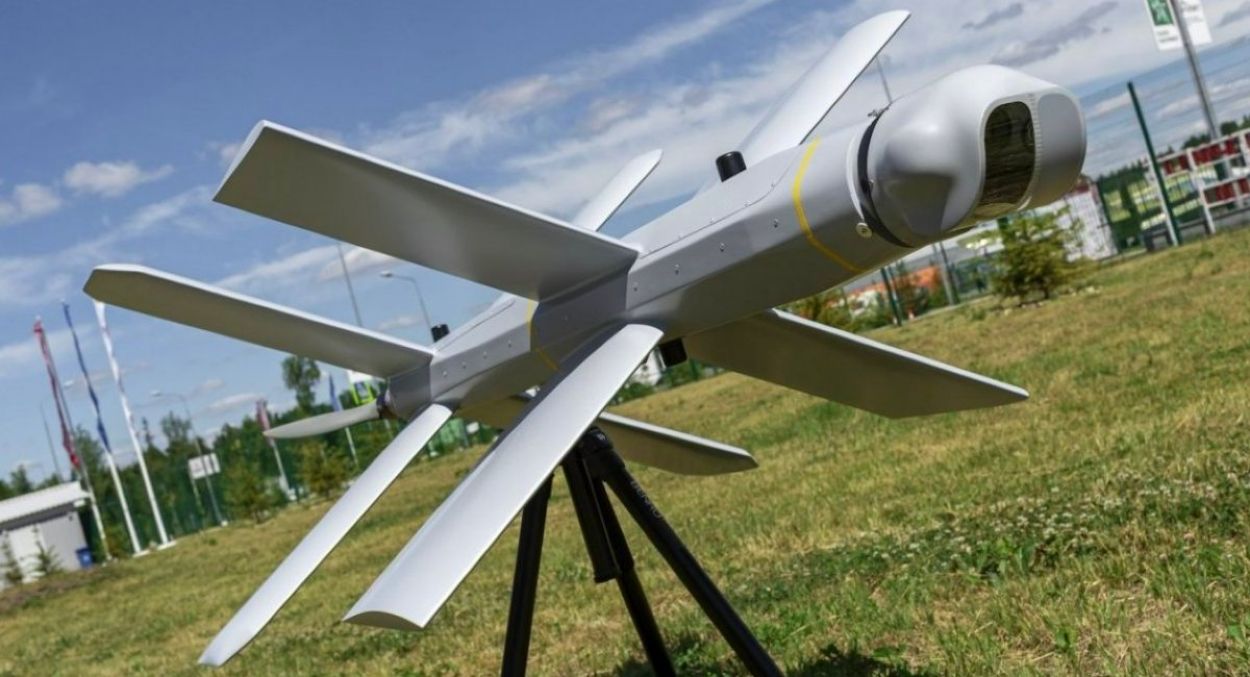The Armed Forces of Ukraine (AFU) have begun using steel nets and cages to protect their artillery guns and military vehicles from the Lancet-3 loitering munition strikes.
The drone continues to destroy Ukrainian towed and self-propelled artillery, videos that have emerged on social media over the last week show.
This Ukrainian practice is similar to the ‘cope cages’ the Russian army installed above many of its tank turrets to block top-attack missiles like the Javelin anti-tank guided missiles (ATGM) – a practice that was widely ridiculed as more of a futile attempt that gave Russian soldiers a fake sense of reassurance.
Russia claimed earlier this month that the Lancet destroyed 45 percent of the artillery systems, like the American M777 lightweight howitzers and the M109 Paladin guns, including numerous self-propelled guns like the Polish Krab.
Nets & Meshes To Stop The Lancet
The new photos showed what appears to be the 152mm 2A65 Msta-B howitzers. One of them is in deep camouflage, covered with tree foliage over the barrel and a tall mesh roof – possibly metallic – over its rear.
One photo shows a gun only having its barrel draped in a camo net while the metallic chain-link net is still exposed.
This might be the most effective Ukrainian cope cage. It’s located in a tall tree forest which would stop Lancet attacks unless it was a near-vertical strike.
The downside is that it would be hard to fire this with all the trees blocking the horizon pic.twitter.com/ShwVJSZAvA
— LogKa (@LogKa11) April 22, 2023
A third rear shot of a gun shows a ghillie suit on a roof over the howitzer’s breach. Whether these are different guns or pictures of the same gun at different stages of being camouflaged is unclear.
A fourth photo on social media also showed a net roof over what looks like a Ukrainian Kevlar-E infantry fighting vehicle, based on the design of the front left portion of the chassis in the photo.
Whether the measures would be successful remains to be seen unless multiple videos and pictures of the Lancet-3 exploding on the roof or being stuck emerge. The practice may have seen limited success, as a previous report in the EurAsian Times showed a Lancet entangled in a “metal mesh” over a Polish 155mm Krab Self-Propelled Gun (SPG).
However, these nets do not seem to have affected any mass impact on the drone strikes on the battlefield since videos of Lancet-3 hits on artillery, SPGs, and radars continue to appear on social media. Moreover, the overhead nets protect the guns from top attacks, which the Lancet-3 does not necessarily approach. Videos have also shown it hitting its targets from the front or the back.
Over the last ten days, recent videos show that Lancets continue to destroy Ukrainian targets. One video from April 17 shows a Lancet coming in from behind and hitting a US M777 artillery gun.
Another video shows a Lancet destroying an OSA short-range air defense system. Two other videos on Twitter on April 22 showed a Lancet hitting an unidentified SPG and a Polish KRAB SPG.
The KRAB hit was interesting because it showed the Lancet-3 coming in from the front as the SPG was stationary on the road. The crew hastily escapes, presumably when the drone is detected. The Lancet hits it roughly under the turret, where it meets the gun.
The overhead drone recording the strike shows a mild explosion and the turret billowing some smoke for a while. However, the vehicle is covered in a massive inferno, and an explosion, presumably after the hit, ignites the ammunition inside.

Counter-Battery Warfare With Lancet-3 Drones
The drone has become the most defining and popular Russian weapon of the war. It was introduced in late-2022 when Ukraine targeted Russia’s long logistical supply lines feeding its rocket and gun artillery. Russia, therefore, undertook a tactical withdrawal to the west side of the Dnieper River.
The use of the drone also marked a new military trend where counter-battery warfare, which involves targeting enemy howitzers using artillery of your own, is now almost exclusively done by kamikaze UAVs like the Lancet-3, according to RIA Novosti.

This spares the logistics of supplying ammunition to artillery guns and the ammunition itself. The drones are lightweight, portable, and easy to operate, with a crew of only two.
This also frees up the artillery guns for core battlefield tasks like supporting ground troops and attacking land targets. Effectively, it can also be said that drones which have also otherwise been used for artillery fire correction in this war, are now used to strike the enemy themselves.
Moreover, on the few instances that Russian ground forces might use artillery for counter-battery fire, the shells, particularly the guided Krasnopol rounds, can easily go through the chain link fences to hit their targets.
- The author can be reached at satamp@gmail.com
- Follow EurAsian Times on Google News





